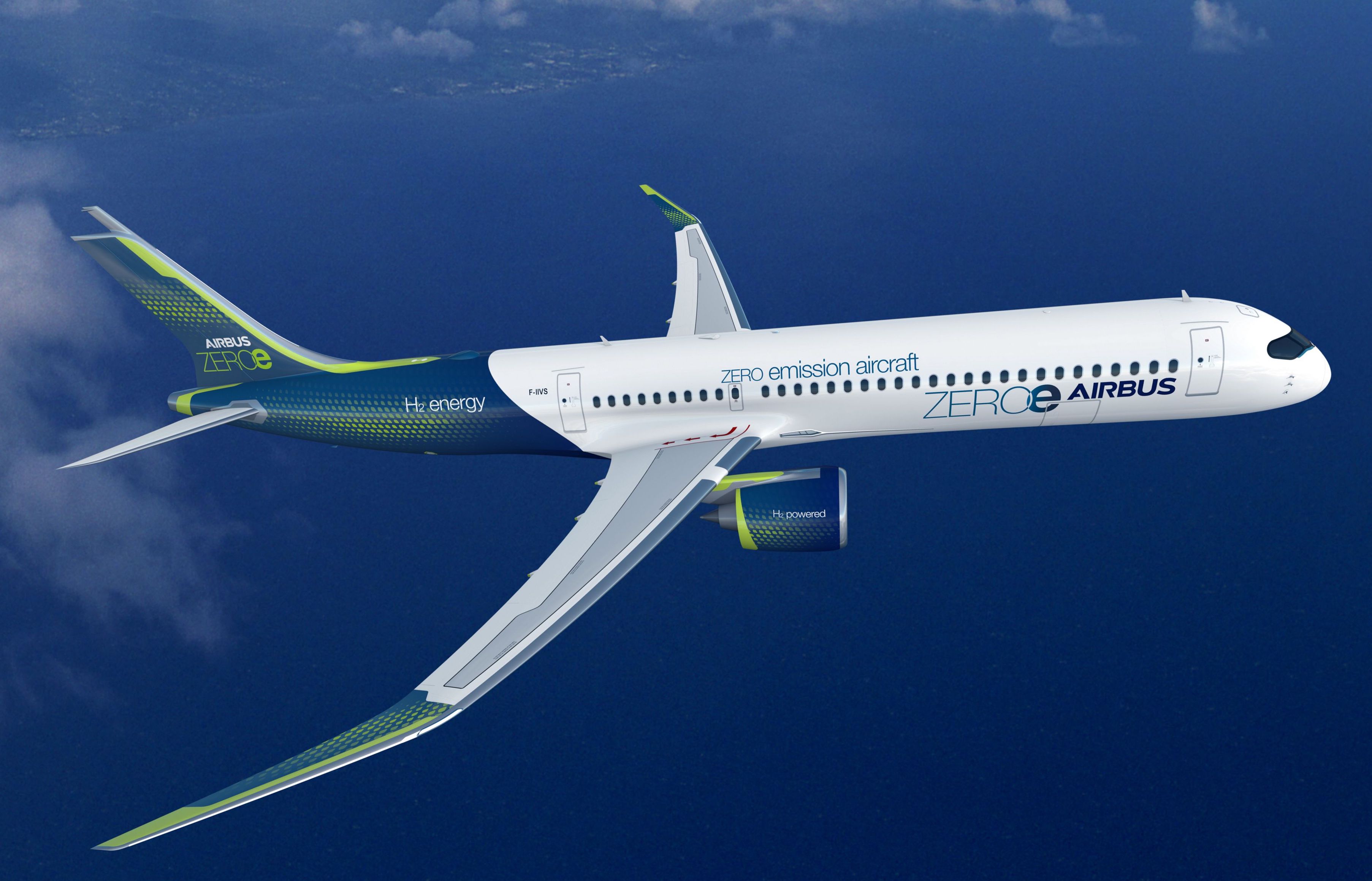Log-in here if you’re already a subscriber
By removing the largest single variable cost from aviation — jet fuel — there is an expectation that the necessary green future will also be more economically efficient. For an electric future of propulsion powered by batteries, the economics of flying have the potential to be radically transformed with the price of electricity — a mere fraction of jet fuel.
But sitting here in 2020, all-electric aviation holds little immediate promise for passenger aircraft with more than 19 seats on short-haul flights. The aircraft fuel, batteries in this case, needs to mature into the propulsion — not the other way around, as has been the case since the birth of aviation. Energy densities in batteries fall far short of what’s needed for mass air transport.
“Our experience with batteries shows us that battery technology is not moving at the pace we want and this is where hydrogen comes in,” said Glenn Llewellyn, Airbus vice president of zero emission aircraft. “We don’t believe that really it’s, today, a relevant technology for large commercial aircraft and we see hydrogen having much more potential.”
Read: Airbus makes a case for disruptive stability in the A321XLR
Embedded inside the strategic assumptions underpinning flying with hydrogen paint a very different future for aviation than the one to which the industry has become accustomed over the last 40 years. The realities of a carbon-free future powered by hydrogen means the enablers of growth — lower costs, higher frequencies, market liberalization — that allowed flying to scale globally will need to recede.
Airbus on Sept. 21 unveiled three conceptual aircraft designs, each relying on hydrogen fuel for their propulsion. Service entry of one of the three concepts is still 15 years away, but the company outlined a roadmap to commercial launch in 2027 or 2028. The company in April shelved its once-promising eFan X hybrid-electric demonstrator earlier this year as business collapsed with the onset of the pandemic, instead shifting its attention to carbon-less propulsion with hydrogen.

In July, The Economist mused about a what if scenario where aviation (and its industrial output) never returned to its pre-pandemic highs, permanently depressed by travel restrictions, environmental concerns, and no longer needed business travel.
The effect would be transformative as the aerospace and airline industries shifted into a greater reliance on governments to stay afloat and maintain employment. “That COVID-19 has exposed the fragility of globalization is particularly apparent in the case of aviation,” wrote the author, Charles Read. “The industry can no longer rely on the steady growth of the past, or indeed any growth at all.”
Read: Time and money, not gimmicks, are going to get people flying again
If that is indeed the case, then the peak of commercial aviation operations powered by traditional jet fuel may in fact be behind us. That comes with not only the near-term market realities of COVID-19, but the longer-term acknowledgment that a post-mature industry has fundamentally different needs than one in its ascent.
Subscribe to Continue Reading
Our award-winning aerospace reporting combines the highest standards of journalism with the level of technical detail and rigor expected by a sophisticated industry audience.
- Exclusive reporting and analysis on the strategy and technology of flying
- Full access to our archive of industry intelligence
- We respect your time; everything we publish earns your attention

